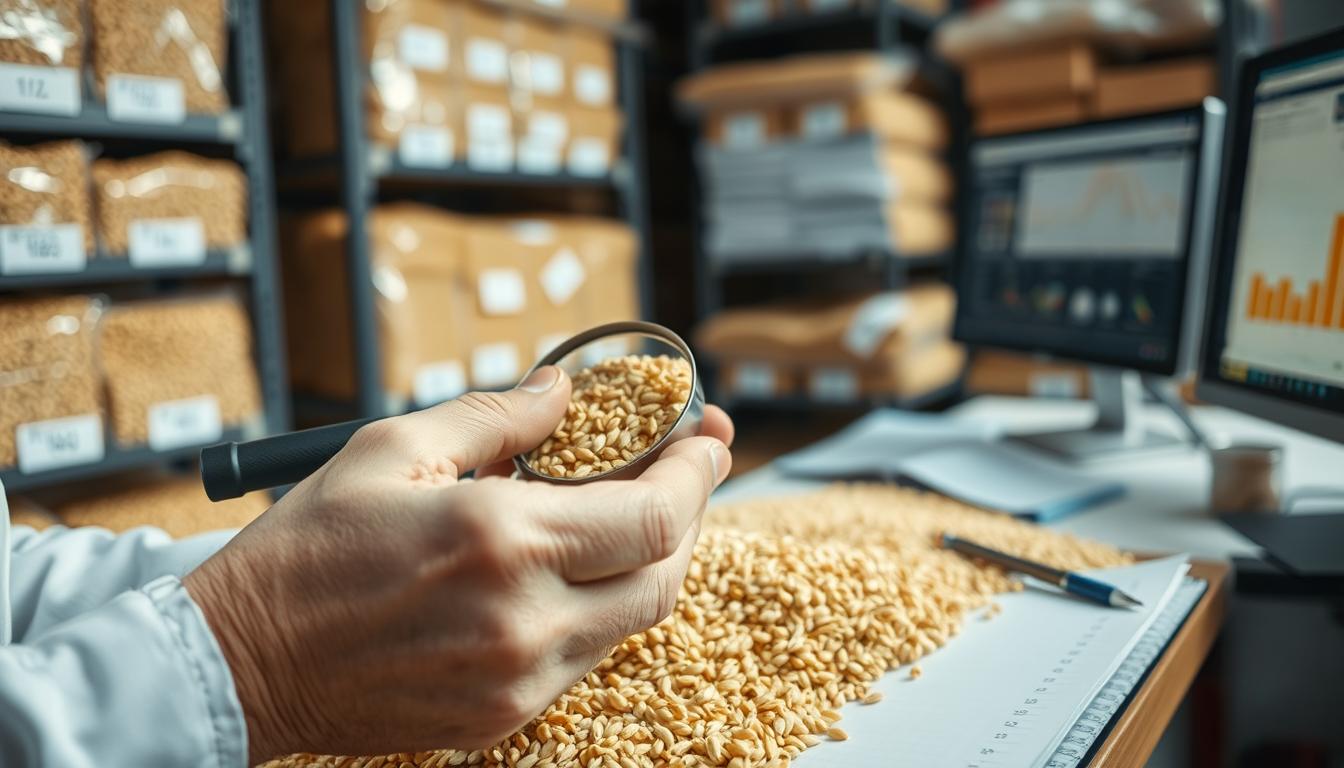Did you know 85% of entry-level climate roles list “prior experience” as a requirement? This creates a frustrating paradox for passionate professionals ready to tackle environmental challenges. Traditional job search methods often leave qualified candidates stuck at the starting line.
Modern tools like RoboApply’s Auto Apply feature now let you submit tailored applications to thousands of climate-focused positions in seconds. But technology alone won’t secure interviews – you need strategies that showcase your unique value.
The field increasingly prioritizes problem-solving abilities over rote technical knowledge. Employers seek candidates who connect data analysis to real-world impacts, whether in research labs or policy rooms. Your academic projects, volunteer initiatives, or even coursework can demonstrate this critical thinking.
Key Takeaways
- Modern hiring practices value practical problem-solving over pure technical expertise
- Academic projects and volunteer work count as relevant experience when framed strategically
- Climate roles now require blending analytical skills with communication abilities
- Targeted applications outperform generic submissions in specialized fields
- Automation tools streamline processes but can’t replace personalized preparation
Positioning yourself effectively requires understanding what hiring managers truly want. This guide reveals how to bridge the gap between your current credentials and employer expectations in environmental sectors.
Understanding the Climate Science Job Landscape
The climate science field offers more pathways than ever before. Over 40% of environmental professionals work outside traditional research labs, according to recent workforce surveys. You’ll find opportunities in unexpected places – from shaping corporate sustainability policies to optimizing renewable energy systems.
Government agencies provide accessible entry points for recent graduates. Organizations like NOAA and NASA prioritize academic training in atmospheric studies or ecological modeling. These roles often involve analyzing environmental data to inform public policy decisions.
Private sector demand grows fastest in renewable energy companies and environmental consultancies. Here, scientists collaborate with engineers to create actionable solutions for carbon reduction. A climate change researcher job might involve developing predictive models for extreme weather impacts on infrastructure.
Non-profits value mission-driven candidates who can translate complex data into public advocacy campaigns. Academic institutions offer hybrid roles that combine teaching with applied research. Many universities partner with corporations to address specific environmental challenges.
Key differences exist between research-focused and applied positions. Theoretical roles emphasize publishing findings, while product-oriented jobs require translating data into business strategies. Clean tech startups particularly seek scientists who can communicate technical concepts to non-experts.
Researching Target Companies and Roles
What separates casual applicants from serious contenders in environmental careers? Strategic research transforms generic applications into targeted opportunities. Start by listing organizations aligned with your values – global consultancies like McKinsey Sustainability alongside startups developing carbon capture tech.

Dive deep into each company’s public data streams. Review their latest sustainability reports, white papers, and project case studies. Notice patterns in the metrics they track – are they focused on emission reductions, biodiversity impacts, or renewable energy outputs?
LinkedIn becomes your secret weapon here. Study profiles of professionals in roles you want. Look for common threads in their education, internships, or early career moves. Did most start with field work? Transition from policy roles? This reveals potential entry paths.
Analyze 10+ job descriptions from your target companies. Create a master list of required skills like GIS mapping or lifecycle assessment. Notice phrasing differences – “collaborative team player” versus “independent researcher” signals cultural priorities.
Set up Google Alerts for organizations you’re tracking. When XYZ Corp announces a new ocean data initiative, reference it in your application. Tools like the Career Launchpad guide help structure this research effectively.
Organize findings in a tracking spreadsheet. Include application deadlines, hiring manager contacts, and role-specific requirements. This system becomes invaluable when applying to multiple positions – especially for high-paying environmental roles needing tailored approaches.
Building a Standout Resume with RoboApply Insights
Your resume isn’t just a document—it’s your first impression in the competitive climate science arena. RoboApply’s AI resume builder transforms academic projects into compelling professional narratives. Start by inputting your coursework details—the tool suggests optimal phrasing to highlight data science techniques and research methodologies.
Leveraging AI Resume and Cover Letter Builder
Replace generic bullet points with quantified achievements. Instead of “studied temperature patterns,” try “Modeled 15 regional climate scenarios using Python, improving prediction accuracy by 22%.” RoboApply’s algorithms analyze thousands of successful resumes to suggest impactful verbs like optimized or forecasted.
Academic projects become consulting engagements when framed strategically. Describe your thesis as “Developed predictive carbon sequestration models for [University] Environmental Institute.” This approach aligns with data analysis techniques employers seek.
Optimizing Your Resume for ATS
Applicant tracking systems filter 75% of resumes before human review. RoboApply’s ATS optimizer ensures your document clears this hurdle by:
- Matching keywords from job descriptions
- Formatting sections for machine readability
- Balancing technical terms with plain language
Include volunteer work demonstrating skills like GIS mapping or statistical analysis. Even campus sustainability initiatives count—frame them as “Collaborated with 5 departments to reduce energy waste through IoT sensor deployment.”
Leveraging RoboApply for Smart Job Applications
Efficient application strategies separate successful candidates from overwhelmed job seekers. RoboApply’s tools transform tedious tasks into strategic advantages, letting you focus energy where it matters most.

Auto-Apply Chrome Extension Advantages
The auto-apply Chrome extension handles repetitive form-filling while maintaining precision. It populates fields using your pre-saved professional profile, ensuring consistency across dozens of submissions. This automation cuts application time by 70% compared to manual methods.
Three features make this tool indispensable:
- Real-time tracking: Monitor submission statuses through a centralized dashboard
- Smart alerts: Receive instant notifications for new openings matching your skills
- Performance analytics: Identify peak application times using historical response data
While tools streamline the process, personalization remains key. Saved hours become available for crafting tailored cover letters or practicing technical interviews. As noted in AI-driven job search strategies, blending automation with human insight yields optimal results.
RoboApply’s system learns from your activity. It suggests improvements to your data science resume based on employer engagement patterns. This feedback loop helps refine your approach for future opportunities.
Developing a Targeted Cover Letter Strategy
Your cover letter bridges academic training and real-world impact in environmental fields. Generic templates won’t cut it when competing for roles requiring specialized data science skills. Tailored narratives demonstrate you’ve researched the company’s unique challenges and prepared solutions.
Personalizing Your Message to Employers
Start by identifying three core issues in the company’s sustainability reports. For example: “Your urban heat island mitigation initiative aligns with my thesis work optimizing green infrastructure placement using Python.” This approach shows immediate applicability of your skills.
RoboApply’s AI cover letter builder accelerates customization. Input a job description, and it generates drafts using the company’s terminology. One user landed interviews at 5 energy firms by adapting professional scientist cover letter examples to highlight carbon capture modeling projects.
Transform classroom projects into relevant experience. Describe statistical analysis of coastal erosion as “Developed predictive models for municipal climate resilience planning.” Quantify outcomes whenever possible – “Improved data interpretation accuracy by 18% through machine learning techniques.”
Address limited experience by emphasizing adaptability. “While new to corporate environments, my fieldwork coordinating 12 volunteers for wetland restoration demonstrates collaborative problem-solving.” Frame academic pursuits as preparation for the scientist role’s demands.
Close with vision: “I aim to bridge gap between ecological research and community action – this position offers the perfect platform to advance that work.” This ties personal goals to the company’s mission, creating lasting impact.
Networking Effectively in the Climate Science Community
Building professional relationships accelerates career growth faster than solo efforts. Strategic connections provide insider knowledge about unadvertised roles and emerging trends in environmental research.

Using Social Media and Conferences
Attend major events like the American Geophysical Union meeting with clear goals. Prepare elevator pitches highlighting your expertise in data science applications for ecological studies. Approach exhibitors with specific questions about their sustainability initiatives.
Optimize LinkedIn by engaging with researchers’ posts about climate modeling breakthroughs. Share analyses of public datasets to demonstrate learning agility. Comment thoughtfully on discussions about carbon capture innovations to showcase analytical skills.
Participate in niche forums like ClimateColab or Earth Science Stack Exchange. Post solutions to technical challenges using data science tools. This establishes credibility while expanding your professional circle.
Volunteer at local clean energy fairs or coastal restoration projects. Hands-on work alongside industry professionals often leads to mentorship opportunities. Document these experiences for future meteorology job applications.
Create Twitter threads explaining complex climate models in simple terms. Use visualizations from academic projects to enhance communication effectiveness. Tag relevant organizations to increase visibility among hiring managers.
Join virtual workshops hosted by NASA or NOAA. Ask precise questions during sessions about satellite data science applications. Follow up with presenters via email to continue knowledge exchange.
Showcasing Transferable Skills Through Relevant Projects
Your academic projects hold untapped potential for demonstrating professional capabilities. Strategic framing transforms classroom assignments into evidence of real-world problem-solving – exactly what employers seek in environmental roles.

Highlighting Academic and Volunteer Work
Reframe research papers as consulting engagements. A thesis becomes “Developed predictive wildfire risk models for Pacific Northwest municipalities using NOAA datasets.” Quantify outcomes: “Identified 3 high-risk zones later adopted in regional emergency plans.”
Volunteer initiatives showcase applied skills. Describe coordinating beach cleanups as “Organized 20 volunteers to collect 800lbs of microplastics, creating datasets for marine pollution tracking.” This demonstrates both leadership and data collection abilities.
Emphasizing Data Analysis and Communication
Build portfolios showing complete problem-solving cycles. Start with defining objectives: “Assessed urban heat island effects in Phoenix metro area.” Detail methodology: “Processed 10GB of satellite imagery using Python and GIS tools.” Conclude with impact: “Proposed tree-planting strategy reducing peak temperatures by 4°F in pilot zones.”
Effective communication separates technical experts from team assets. Create sample reports translating complex statistics into executive summaries. One environmental studies graduate secured interviews by including a 2-page infographic explaining coastal erosion patterns to non-scientists.
“Analyzed regional precipitation patterns using Python and ARIMA modeling. Identified 3 drought risk zones through statistical analysis of 15 meteorological variables. Presented findings to city planners via interactive dashboards, influencing new water conservation policies.”
This approach shows technical depth, problem-solving rigor, and stakeholder engagement – three pillars of successful environmental careers.
Mastering the Interview Preparation Process
Success in environmental roles hinges on how you articulate solutions during high-stakes conversations. Three core elements separate prepared candidates: technical fluency, structured storytelling, and adaptive thinking.
Researching Common Interview Questions
Environmental employers typically assess three question types. Technical queries test your grasp of methods like geospatial analysis or carbon accounting. Behavioral prompts explore collaboration and problem-solving through the STAR framework. Case studies simulate real-world scenarios like optimizing renewable energy grids.
Identify recurring themes by analyzing 15-20 job postings from target organizations. Connect with professionals through LinkedIn to discover unspoken priorities. One atmospheric science graduate uncovered hidden emphasis on Python visualization skills through informational interviews.
Practicing Your Responses with Mock Interviews
Simulated sessions reveal gaps in explanation clarity. Record yourself explaining machine learning applications in pollution tracking to a non-technical audience. Tools like interview coaching platforms provide structured feedback on pacing and terminology use.
Develop 4 adaptable success stories using this template: “Faced [challenge], applied [skill] to [action], achieving [quantified result].” For example: “Streamlined data collection during wildfire research by implementing mobile sensors, cutting processing time by 40%.”
Platforms offering data analyst interview guidance prove invaluable for refining technical explanations. Schedule weekly peer practice sessions focusing on translating complex models into actionable insights.
Demonstrating Analytical and Technical Expertise
Technical fluency separates contenders from spectators in environmental roles. Employers seek candidates who transform raw numbers into actionable insights through methodical processes.
Master statistical fundamentals through environmental lenses. Explain how confidence intervals validate temperature trend predictions or regression analysis identifies pollution sources. Connect hypothesis testing to verifying ecological models.
Showcase machine learning applications with climate relevance. Discuss using time series models for flood risk projections or clustering algorithms to categorize atmospheric patterns. Prepare concrete examples from academic projects.
Execute code drills using Python/R ecosystems. Manipulate NOAA datasets during mock interviews – clean missing values, visualize heatwaves, or calculate emission correlations. Highlight libraries like Pandas or Matplotlib.
Structure problem-solving narratives. Walk through analyzing urban carbon footprints: “First, I defined scope using satellite data. Then compared three modeling approaches before selecting random forests for accuracy.”
Address data quality challenges authentically. Describe techniques for imputing missing rainfall measurements or reducing sensor calibration errors. Reference specific tools like NASA’s Giovanni system.
Leverage academic exposure to professional tools. Mention processing Landsat imagery in GIS projects or querying CMIP6 climate models. These demonstrate transferable technical aptitude.
One environmental analyst candidate impressed interviewers by walking through their machine learning workflow: “I validated the model using bootstrap statistics to account for measurement uncertainties in historical temperature records.”
how to get climate scientist interviews without experience
Breaking into environmental research roles requires more than academic credentials—it demands strategic positioning of your capabilities. Focus shifts from quantity to quality when demonstrating expertise. Three polished projects often outweigh ten surface-level initiatives.
Bridging the Experience Gap with Strategic Applications
Curate 2-3 detailed case studies showing complete analytical workflows. Document how you framed coastal erosion problems, cleaned satellite data sets, and modeled solutions using Python. One graduate secured interviews by showcasing flood prediction models adopted by local governments.
Reframe academic work as professional engagements. Describe thesis research as “Consulted for State Parks Department on wetland conservation strategies.” Quantify outcomes: “Identified 5 high-priority zones through geospatial analysis, influencing $2M in funding allocations.”
Prioritize organizations valuing theoretical training. Federal agencies and university labs often provide structured onboarding programs. Consider fellowships like NOAA’s climate resilience initiatives that convert interns into full-time researchers.
Early-career programs offer accelerated growth despite lower pay. One atmospheric science major transitioned from a six-month renewable energy internship to leading data validation teams. Their fresh approach to machine learning applications became a departmental standard.
Highlight cutting-edge methodologies learned through recent coursework. Discuss proficiency in AI-driven climate modeling or blockchain applications for carbon credit tracking. These niche skills compensate for limited industry exposure.
Connect with professionals who recently entered the field. Alumni networks and LinkedIn groups reveal unspoken hiring criteria. One candidate gained referral access to 15+ roles by collaborating on open-source ecological forecasting tools.
Utilizing RoboApply Tools for Interview Success
Securing environmental research roles demands precision at every stage. RoboApply’s specialized features streamline preparation while maintaining human insight. Three tools prove critical for polishing your candidacy.
Grammar Checker Meets ATS Optimization
The Grammar Checker eliminates errors while enhancing technical terminology. It scans documents for climate-specific terms like “carbon sequestration modeling” and suggests context-aware improvements. Combined with the ATS Optimizer, your materials clear automated screenings while preserving nuanced details.
One user increased interview invitations by 60% after refining project descriptions. The system flagged passive phrasing in their wildfire prediction case study, transforming “data was analyzed” into “I applied machine learning to predict burn patterns.”
Strategic Outreach Management
RoboApply’s Outreach CRM tracks every application through customizable dashboards. Monitor response rates across organizations, noting which data visualization skills generate most interest. Set reminders to follow up on submissions after 7-10 business days.
Key features include:
- Performance analytics comparing interview conversion rates
- Feedback logs documenting employer preferences
- Auto-scheduling for second-round preparation
This process transforms scattered efforts into targeted campaigns. You’ll identify patterns in successful applications, replicating effective strategies across future submissions. Continuous improvement becomes built into your job search workflow.
FAQ
Can I land climate science interviews without direct work experience?
A: Yes. Focus on transferable skills like data analysis, statistical modeling, or GIS software proficiency. Use academic projects, volunteer work, or open-source climate datasets to demonstrate expertise. Tools like RoboApply’s ATS Optimizer can align your resume with job descriptions even if your background isn’t a perfect match.
How do I prepare for technical questions in data science interviews?
A: Master core concepts like logistic regression, hypothesis testing, and machine learning workflows. Practice coding challenges on platforms like Kaggle and review climate-specific case studies (e.g., NOAA’s climate models). Use RoboApply’s Grammar Checker to refine project documentation for clarity.
What networking strategies work best for climate science roles?
A: Attend conferences like AGU Fall Meeting or ClimateCAP. Engage with organizations like Climatebase or The Climate Group on LinkedIn. Share analyses of public datasets (e.g., NASA’s Earthdata) to showcase problem-solving skills. RoboApply’s Outreach CRM helps track interactions with hiring managers.
How important are cover letters for entry-level positions?
A: Critical. Tailor each letter to highlight skills like data visualization or statistical analysis relevant to the employer’s focus (e.g., carbon capture startups vs. government agencies). Use RoboApply’s Cover Letter Builder to automate customization while maintaining a personal touch.
Can machine learning skills compensate for limited climate science experience?
A: Absolutely. Employers value ML applications like predictive modeling for extreme weather events. Build a portfolio using platforms like Google Earth Engine or Python’s scikit-learn. Emphasize projects that address climate challenges, even if they’re academic or self-directed.
How do I handle statistics questions during interviews?
A: Prepare to explain concepts like p-values, confidence intervals, and regression analysis in climate contexts. Practice articulating how you’ve applied these techniques—for example, analyzing temperature trends using R or Python. Use mock interviews to refine technical communication.


















